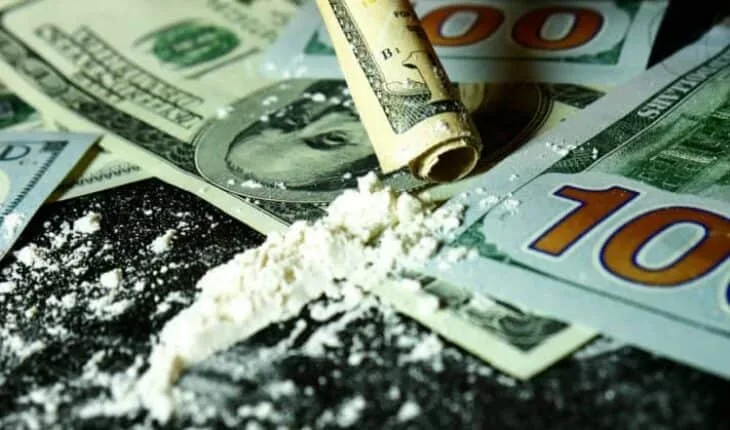What US Cities Have the Highest Drug Use: Drug Capital of the US: Drug use not only impacts individuals but also has far-reaching consequences on society, healthcare systems, and law enforcement efforts. By examining the cities with the highest drug use rates in the country, we aim to shed light on the factors contributing to this issue and explore the initiatives undertaken to combat drug addiction.
The History of Illicit Drug Use in the United States
The history of illicit drug use in the United States is a complex and story with many twists and turns that spans centuries. The quest to comprehend the essence of illicit drug abuse and addiction spans centuries, undergoing continuous evolution in the pursuit of knowledge.
Early History
The use of various substances, including opium and cannabis, has historical roots in the United States. Native American tribes had their traditional uses for certain plants and substances long before European settlers arrived.
19th & 20th Centuries
Opium and its derivatives, such as morphine and laudanum, were commonly used for medical purposes during the 19th century. However, the recreational use of these substances also began to emerge. The early 20th century saw the emergence of new illicit substances, including cocaine and heroin. The federal government began regulating these drugs with the Harrison Narcotics Tax Act of 1914.
Prohibition Era During the Prohibition era (1920-1933), when alcohol was banned, illegal alcohol production and distribution led to increased criminal activity and substance abuse.
1960s – 1990s
The counterculture movement of the 1960s brought about a surge in marijuana use. The 1970s saw a rise in cocaine use, particularly in the disco scene. The crack cocaine epidemic of the 1980s and the subsequent “War on Drugs” under the Reagan administration had a significant impact on drug policy and enforcement.
21st Century
The 21st century has witnessed ongoing challenges related to drug addiction, with the opioid crisis being a prominent issue. Prescription opioids and synthetic opioids like fentanyl have contributed to a wave of overdose deaths.
Understanding how the history of illicit drugs is crucial for addressing the current state of drug use and addiction in the United States. It provides valuable insights into the development of drug policies, societal attitudes, and the ongoing efforts to combat illicit drug use.
Top 10 US Cities with the Most Overall Drug Use
Utilizing a weighted system that considers both the frequency of drug usage and the severity of the substances involved, our team has compiled a ranking of U.S. cities based on overall drug usage. In this assessment, Omaha emerged as the city with the highest prevalence of drug use across the nation. Following closely behind, Wichita, Tulsa, Oklahoma City, and Mesa shared the designation of runner-up for the cities with the most concerning levels of drug use. These 10 cities were found to have abused drugs at an all time high rate in the United States of America.
1. Phoenix, AZ
2. Mesa, AZ
3. Las Vegas, NV
4. Colorado Springs, CO
5. Minneapolis, MN
6. Omaha, NE
7. Wichita, KS
8. Tulsa, OK
9. Oklahoma City, OK
10. Indianapolis, IN
Conversely, Miami, FL boasted the lowest incidence of drug use among all cities in the United States. Washington D.C. secured the second position, followed by Atlanta, Georgia in third place. These urban centers demonstrated the most favorable rankings for overall illegal drug usage according to our weighted system. Other low-ranking cities include:
● New Orleans, LA
● New York, NY
● Baltimore, MD
● El Paso, TX
● Detroit, MI
● San Francisco, CA
● Oakland, CA
Which US Cities Have the Highest Percentage of Marijuana Use?
Marijuana stands out as the most widely used drug across the United States, with over 60% of residents in certain cities having experimented with it at least once. Leading the nation in this regard is Omaha, followed closely by Mesa, AZ, and Tulsa, OK, showcasing varying degrees of marijuana use prevalence in these urban centers. The top 10 US cities that boast the most marijuana use are:
1. Omaha, NE- 66.2%
2. Mesa, AZ- 65.0%
3. Tulsa, OK- 64.9%
4. Minneapolis, MN- 64.8%
5. Indianapolis, IN- 64.6%
6. Phoenix, AZ- 64.4%
7. Wichita, KS- 64.4%
8. Portland, OR- 64.2%
9. Nashville, TN- 64.2%
10. Oklahoma City, OK- 64.1%
Which US Cities Use Cocaine The Most? According to usage statistics, cocaine stands as the second most widely used drug in the United States. Phoenix, AZ, emerges as the city with the highest percentage of cocaine usage nationwide, boasting a staggering figure of over 20% of its residents having experimented with the drug. Following closely are Mesa, AZ, and Omaha, NE, both presenting results that indicate over 1 in 5 citizens from each of these cities have encountered cocaine at least once.
These 10 US cities have the highest rate of cocaine use:
1. Phoenix, AZ- 23.3%
2. Mesa, AZ- 22.5%
3. Omaha, NE- 22.2%
4. Oklahoma City, OK- 22.0%
5. Las Vegas, NV- 21.9%
6. Tulsa, OK- 21.8%
7. Wichita, KS- 21.8%
8. Colorado Springs, CO- 21.8%
9. Tucson, AZ- 21.8%
10. Fresno, CA- 21.8%
Top 10 US Cities With the Highest Percentage of Heroin Use? Among the illicit drugs out there, heroin stands out as one of the most dangerous. In this analysis of various drugs, city data reveals that heroin exhibits the lowest usage rate. Notably, Omaha and Indianapolis share the distinction of having the highest heroin use rates in the United States, closely followed by Columbus, Ohio. The peak usage rate hovers around 3.4% of the population.
These cities listed below boast the highest rate of heroin use in the US:
1. Omaha, NE- 3.4%
2. Indianapolis, IN- 3.4%
3. Columbus, OH- 3.3%
4. Nashville, TN- 3.2%
5. Oklahoma City, OK- 3.1%
6. Tulsa, OK- 3.1%
7. Minneapolis, MN- 3.1%
8. Kansas City, MO- 3.1%
9. Memphis, TN- 3.1%
10. Wichita, KS- 3.0%
Which US Cities Have The Highest Percentage of the Population Who Use Methamphetamine?
Methamphetamine, also called meth, exhibits a prevalence in the US that surpasses heroin use by more than 4x in numerous cities on this list. Notably, Phoenix and Mesa emerged as the top two cities in the United States with the highest rates of methamphetamine utilization. Omaha, Nebraska secured the third position nationwide for methamphetamine use.
These 10 US cities rank boast the highest rate of methamphetamine use.
1. Phoenix, AZ- 15.1%
2. Mesa, AZ- 14.1%
3. Omaha, NE- 14.0%
4. Oklahoma City, OK- 13.8%
5. Fresno, CA- 13.8%
6. Las Vegas, NV- 13.5%
7. Tulsa, OK- 13.4%
8. Wichita, KS- 13.4%
9. Arlington, TX- 13.4%
10. Tucson, AZ- 13.4%
Drug Overdose and Drug Related Deaths in the US
Drug overdose deaths in the United States have reached alarming levels in recent years, presenting a significant public health crisis. Here are key facts and statistics about drug overdose deaths in the US:
High Overdose Death Rates
In 2021, the United States witnessed 106,699 drug overdose deaths, marking a substantial increase from previous years. This surge represented a 14% rise in the age-adjusted overdose death rate compared to 2020, with a rate of 32.4 deaths per 100,000 standard population [2][3].
Long-Term Trends
The data shows a concerning trend of increasing overdose deaths over the years. In 1999, there were 16,849 drug overdose deaths, indicating a staggering 781% increase by 2021 [4].
Opioid Epidemic
The opioid epidemic continues to play a significant role in overdose deaths. Prescription opioids, synthetic opioids like fentanyl, and illicit opioids have contributed to a substantial portion of overdose fatalities.
Impact of Drug Overdose Deaths
These overdose deaths represent a pressing public health concern, leading to devastating consequences for individuals, families, and communities. Efforts to address this crisis include harm reduction strategies, increased access to addiction treatment, and enhanced education and prevention initiatives.
Factors Contributing to Overdose
Several factors contribute to overdose deaths, including the availability and use of potent opioids, issues related to substance abuse disorder, and socioeconomic disparities.
Educational Attainment
Recent studies have also explored the relationship between educational attainment and overdose deaths, shedding light on disparities in overdose rates among different population groups.
Steps Taken To Stop Drug Abuse Destruction
Addressing the significant challenge of drug abuse and its destructive consequences in the United States has required a multifaceted approach involving various steps and agencies. Key actions and entities involved in this endeavor include:
● The Drug Enforcement Administration (DEA) plays a pivotal role in enforcing drug laws and regulations, with a focus on targeting illegal drug manufacturing, and distribution and combating the illicit drug trade linked to Mexican cartels and street gangs.
● The Mental Health Services Administration (SAMHSA) concentrates on providing access to mental health and substance abuse treatment services, promoting prevention programs, and offering crucial resources to individuals grappling with addiction.
● Efforts in prescription drug monitoring, where several states have implemented monitoring programs to oversee the dispensing of prescription drugs, thereby reducing their diversion and abuse.
● National average tracking is led by agencies like the National Institute on Drug Abuse (NIDA), which monitors national averages for drug use, addiction rates, and drug overdoses, supplying valuable data for policymakers and healthcare professionals.
● Expanding access to addiction treatment facilities and services to assist individuals in overcoming substance abuse disorders.
● Initiatives in prevention education often target high school students and rural areas, utilizing education and awareness programs to prevent drug abuse, and recognizing the critical role of early intervention.
● Addressing specific drug trends, such as heroin use, opioid use, and methamphetamine use, demands tailored strategies and interventions.
● Government funding is allocated by the federal government to support research, treatment, and prevention efforts aimed at curbing the drug problem.
● Collaboration among law enforcement at local, state, and federal levels to combat drug trafficking and illicit drug markets.
● Community involvement engages communities in drug abuse prevention and treatment efforts, fostering a sense of responsibility and support in addressing this complex issue.
While progress has been made, the fight against drug abuse remains an ongoing challenge, with a high percentage of Americans affected. Continued efforts and comprehensive strategies are vital to mitigate the destruction caused by drug abuse.
Seeking Help To Combat Substance Abuse
In seeking help to combat substance abuse, it’s essential to recognize the gravity of the situation. Opioid abuse and the misuse of other drugs have become a pervasive and serious problem across various locations in the country, affecting cities and rural areas alike. Data rates reveal that America faces one of the highest percentages of substance abuse cases globally.
To address this pressing issue, it’s crucial for individuals and their loved ones to consider seeking assistance from an addiction treatment center. These centers offer comprehensive support, including medical, psychological, and social interventions, tailored to combat opioid abuse, addiction to other drugs, and related challenges. As substance abuse continues to impact countless lives, reaching out for help is not a sign of weakness but a courageous step toward recovery. Whether in a small town or a bustling city, the battle against drug addiction is a shared one.
By accessing the resources and support available at addiction treatment centers, individuals can break free from the grip of substance abuse and pave the way for a healthier, drug-free future. Together, with a commitment to recovery and the assistance of dedicated professionals, we can work towards a brighter, substance-free tomorrow for ourselves and our communities.
- New lipid-based pathway discovered as key to memory formation - 25th June 2025
- Crucial link could explain how Alzheimer’s takes hold - 25th June 2025
- Understanding Your Mind Can Improve Daily Life - 25th June 2025







